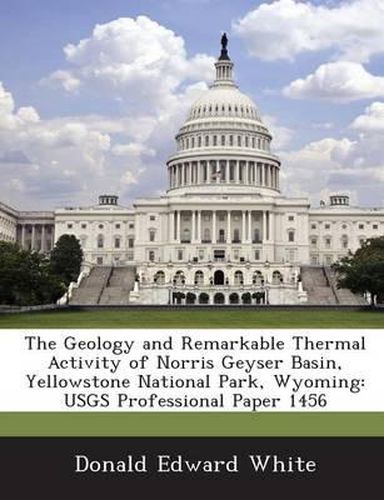Readings Newsletter
Become a Readings Member to make your shopping experience even easier.
Sign in or sign up for free!
You’re not far away from qualifying for FREE standard shipping within Australia
You’ve qualified for FREE standard shipping within Australia
The cart is loading…






Norris Geyser Basin, normally shortened to Norris Basin, is adjacent to the north rim of the Yellowstone caldera at the common intersection of the caldera rim and the Norris-Mammoth Corridor, a zone of faults, volcanic vents, and thermal activity that strikes north from the caldera rim to Mammoth Hot Springs. An east-west fault zone terminates the Gallatin Range at its southern end and extends from Hebgen Lake, west of the park, to Norris Basin. No local evidence exists at the surface in Norris Basin for the two oldest Yellowstone volcanic caldera cycles ( 2.0 and 1.3 m.y.B.P.). The third and youngest cycle formed the Yellowstone caldera, which erupted the 600,000-year-old Lava Creek Tuff. No evidence is preserved of hydrothermal activity near Norris Basin during the first 300,000.years after the caldera collapse. Glaciation probably removed most of the early evidence, but erratics of hot-spring sinter that had been converted diagenetically to extremely hard, resistant chalcedonic sinter are present as cobbles in and on some moraines and till from the last two glacial stages, here correlated with the early and late stages of the Pinedale glaciation
$9.00 standard shipping within Australia
FREE standard shipping within Australia for orders over $100.00
Express & International shipping calculated at checkout
Norris Geyser Basin, normally shortened to Norris Basin, is adjacent to the north rim of the Yellowstone caldera at the common intersection of the caldera rim and the Norris-Mammoth Corridor, a zone of faults, volcanic vents, and thermal activity that strikes north from the caldera rim to Mammoth Hot Springs. An east-west fault zone terminates the Gallatin Range at its southern end and extends from Hebgen Lake, west of the park, to Norris Basin. No local evidence exists at the surface in Norris Basin for the two oldest Yellowstone volcanic caldera cycles ( 2.0 and 1.3 m.y.B.P.). The third and youngest cycle formed the Yellowstone caldera, which erupted the 600,000-year-old Lava Creek Tuff. No evidence is preserved of hydrothermal activity near Norris Basin during the first 300,000.years after the caldera collapse. Glaciation probably removed most of the early evidence, but erratics of hot-spring sinter that had been converted diagenetically to extremely hard, resistant chalcedonic sinter are present as cobbles in and on some moraines and till from the last two glacial stages, here correlated with the early and late stages of the Pinedale glaciation